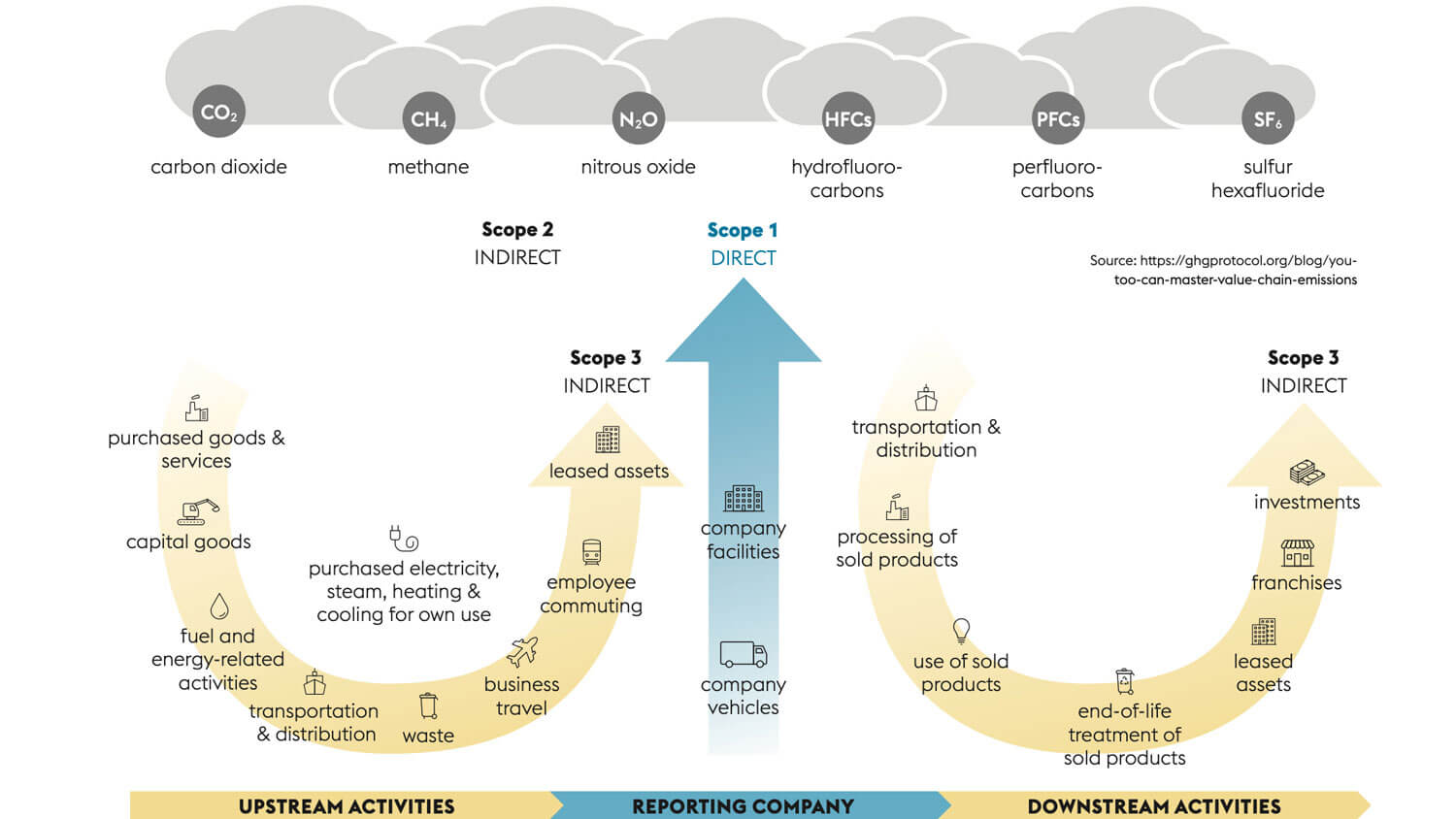
Climate Impact at HPM: Our contribution to climate protection
Climate protection, everyone has their own associations with this word, whether it’s using less heating, saving energy, or using public transport instead of cars. In our private lives, there are many small things that we can all do. And as an international company, we think bigger and see these opportunities as our responsibility. Within the High Performance Metals (HPM) Division, the “Climate Impact” pillar is therefore dedicated to the topic of climate protection as part of inSPire. The focus is on decarbonization through improved energy efficiency, electrification, and the use of renewable energies.
But aren’t climate impact and climate protection just two ways of saying the same thing? Not quite. Climate impact refers to all company activities that influence the climate in a positive or negative way. Central to this are the greenhouse gases (GHG), which include methane (CH4), nitrous oxide (also known as laughing gas, N2O), and carbon dioxide (CO2), as these contribute significantly to global warming. With the Climate Impact unit, we are pursuing the goal of reducing our emissions and the associated negative environmental impacts, thus making an important contribution to climate protection. As Michael Ebner (Lead of Climate Impact) explains, “Climate protection affects us all and requires global and societal willingness and effort.”
WHAT ARE SCOPE 1,2, AND 3 EMISSIONS?
Emissions can be divided into three categories according to the Greenhouse Gas Protocol (GHG Protocol): Scope 1, Scope 2, and Scope 3. They are classified according to their origin.
- Scope 1 refers to direct GHG emissions. These originate from sources that are company-owned or controlled. This includes emissions from company vehicles or fuel used by the company.[1]
- Scope 2 refers to indirect GHG emissions from purchased energy, such as electricity. The emissions occur at the energy-generating entity and are credited accordingly to the company that purchases and consumes the energy.[2]
- Scope 3 includes other indirect GHG emissions. These result from the company’s activities, but come from sources that aren’t directly owned or controlled by the company. This includes, for example, emissions resulting from the use of products and services sold.[3]
[1] [2] [3] Source: World Business Council for Sustainable Development, World Resources Institute: Greenhouse Gas Protocol – A Corporate Accounting and Reporting Standard

REDUCING OUR FOOTPRINT
Now it’s clear what the different emissions scopes mean — but what about us here at the HPM Division?
The steel industry is by its nature a resource-intensive sector. We have been working hard for years to reduce our footprint as much as possible, for example, by increasing energy efficiency, further developing the circular economy in our mills (read more about this in our articles on circular economy), and using renewable energies.
We currently emit around 650.000 tons of Scope 1 and 2 emissions on average per year. To put this into perspective, in relation to the emissions given off by a new car with an average of 112 grams of emissions per kilometer, this corresponds to around 6 billion kilometers driven — or 150.000 circumnavigations of the earth.
In the coming years, we want to reduce these quantities significantly: by around 40.000 tons per year by 2029.
Energy plays a central role in our production processes. We consume around 3,2 terawatt-hours annually. This corresponds to the average annual consumption of around 160.000 Austrian households. Here, too, we see major opportunities for change, which we have defined in more detail in our Climate Impact fields of action.
FULL FOCUS ON DECARBONIZATION
Based on this data and detailed analyses of HPM’s emissions, fields of action were developed in which we can and are aiming to take particularly effective action: decarbonization, clean energy, and energy efficiency.
Decarbonization stands as an overarching theme above the other two fields of action: Using green energy and improving energy efficiency will make a positive contribution to achieving our decarbonization targets. Our ambitious roadmap envisages a 50% reduction in our Scope 1 & 2 emissions by 2029 compared with the base year 2019.
We already attach great importance to the use of environmentally friendly energies. The melting of scrap as the first step in the production of our high-performance materials is based on electric power. Among other things, we also use renewable energies here, significantly reducing our emissions. With this in mind, we are pursuing our own energy generation projects, which use, for example, wind or photovoltaics. Finding a suitable substitution for natural gas is also a key concern. Here, too, we are evaluating alternative options.
Making the best possible use of energy and using it efficiently is another indispensable step on the path to lower emissions and greater climate protection. We are therefore pushing for a significant increase in energy efficiency in many areas. This includes, for example, the increased use of waste heat, the installation of highly efficient furnace systems, and the reduction of heat losses and energy savings through LED lighting.
We are also focusing on increasing electrification of the existing infrastructure, such as our furnace systems, and also on converting the company’s internal vehicle fleet, such as our cars or forklifts, to electric drive systems.
You can find out all the details about the individual fields of action and the associated projects in the upcoming blog articles.
OUR GOAL: CLIMATE NEUTRALITY
As mentioned earlier, we have set a target in the division to reduce our Scope 1 and 2 emissions by 50% by 2029 compared to the base year 2019. But that’s not all. We are taking things further with our ambitious goal to be climate neutral by 2050. Climate neutrality means that human activities, or in this case, our corporate activities, have no net negative impact on the climate. On the one hand, this is achieved by reducing emissions, and on the other hand, by offsetting emissions that cannot be avoided.
Lower energy consumption also makes an important contribution to reducing our emissions, which is why our top priority is the sustainable reduction of annual energy consumption by 2% per year in the form of energy-saving measures relative to the energy baseline.
COMPETENCE + MOTIVATION = THE TEAM BEHIND OUR EFFORTS
A topic as comprehensive and important as climate protection needs people who are dedicated to its implementation and further development with a great deal of enthusiasm, motivation, and conviction. This is exactly what sets the inSPire Climate Impact Team apart. Michael Ebner and Thomas Steiner lend their expertise to various projects in order to achieve our climate protection goals.

Thomas Steiner (Climate Impact Specialist) describes what motivates him: “It is our responsibility to leave behind a livable planet and a sustainable economic system for future generations. Together with many experts, our projects and activities make an indispensable contribution to reducing the ecological footprint of our division. In this way, we can protect the environment while ensuring economic stability. This is a goal we pursue with passion.”
Michael Ebner adds: “The special thing about Climate Impact is that all employees can contribute, both through ideas from our continuous improvement process and in their daily work. There are many opportunities to save energy. We should take advantage of these opportunities in both our professional and private lives.”
You can read more about their daily work and tasks as well as their inSPire colleagues in our team portrait.
DEVELOPING SOLUTIONS TOGETHER
In addition to the collaboration within the team, Michael Ebner and Thomas Steiner value the exchange with other experts in the industry. Their discussions often result in new perspectives and collaboration opportunities to jointly solve a problem with innovative approaches. For this reason, the team can regularly be found at trade fairs and conferences, both as speakers and as visitors.
The ASMET conference of the Austrian Society for Metallurgy and Materials is an unmissable annual event. Each year, it focuses on a different topic. In 2023, everything revolves around decarbonization, energy efficiency, and alternative energy sources.
International events such as the Green Steel World Conference also offer a good opportunity to network and jointly promote sustainability in the industry.
WE TAKE OUR RESPONSIBILITY SERIOUSLY
Climate protection concerns us all. As a global company with several thousand employees, we see it as our duty to seize opportunities and make our business activities as climate-friendly as possible. By using innovative processes to increase energy efficiency as well as new solutions for our energy supply, we can significantly reduce emissions. We have a great deal of leverage for change, which we draw from in Climate Impact as well as in the areas of Circular Economy, Sustainable Sourcing, and Social Impact. Together, we are succeeding in shaping a more sustainable future.